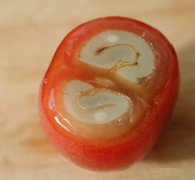How much coffee does the world drink every day? Do you drink differently from place to place?

According to the statistics of ICO (International Coffee Organization) in 2007, the country that imports the largest amount of coffee is the United States, which is nearly three times that of Japan, Germany ranks second, and Japan ranks third. If exports are included, Brazil ranks second, while Japan ranks fourth in terms of coffee consumption. If you rank in terms of per capita consumption, Finland, Norway, Belgium, Luxembourg, order buying, etc., will be ranked ahead of schedule. Japan's per capita consumption is only 1x4 of that of Finns, and it cannot even enter the Top10, that is, the per capita consumption is less than one cup a day. This is based on the ideal consumption situation, and changes in the market will have a certain impact on consumption.
Top five annual imports
The first United States
The second Germany
The third Japan
Fourth Italy
Fifth France
Top five annual consumption
The first United States
Second Brazil
The third Germany
Fourth Japan
Fifth Italy
Top five annual per capita consumption
First Finland
Second Norway
Third Belgium-Luxembourg
Fourth Denmark
Fifth Switzerland
IOC (intermational coffee organization) 2007 Annual Statistics
Coffee is consumed in different ways around the world. In Ethiopia, the birthplace of coffee, there are traditional cultural customs similar to the "coffee etiquette" of the Japanese tea ceremony. In northern Europe, people only drink the part that is clarified after the coffee is brewed.
Not only are the seeds of coffee edible, but in Yemen and Ethiopia, dried flesh is fried and drunk, and leaves are fried to drink as tea. I have tasted these two drinking methods locally, but the taste of these drinks is very different from the coffee we usually drink.
In Japan, the phenomenon of drinking coffee at home is very common, and the mainstream method of coffee extraction is dripping. And this method is generally one of the ideal ways for families to make coffee. But personally, I very much hope that coffee shops can prosper again. I often recall the 1970s, when coffee shops were very prosperous, but at that time society always regarded coffee shops as bad places to teach bad young people. Now, we have only half as many coffee shops as we did then, so the atmosphere of that era is hard to find now.
Important Notice :
前街咖啡 FrontStreet Coffee has moved to new addredd:
FrontStreet Coffee Address: 315,Donghua East Road,GuangZhou
Tel:020 38364473
- Prev

What are the fruits and seeds of coffee? What the coffee beans look like.
Coffee Cafe Coffee popular Science Coffee (coffee cherries) is oval, coffee flowers lag behind, the fruit is only the size of a match head, after 6 to 8 months of growth will slowly become larger. The size of the coffee fruit varies according to the cultivation environment and variety. If it is Arabica, the fruit will be the size of 1.5~2cm, and the more cross-sectional diameter will be in 1~1.5cm.
- Next

What exactly are the effects of milk tea and coffee?
Milk tea contains large amounts of milk essence, a trans fatty acid that reduces male hormone secretion and inhibits sperm motility; it also affects egg quality and increases the risk of infertility and fetal malformations. Trans fatty acids can affect hormone synthesis, which may lead to irregular menstruation, sexual dysfunction and so on. The content of trans fatty acids in natural foods is almost zero, so it is difficult to be accepted and eliminated by the human body.
Related
- Beginners will see the "Coffee pull flower" guide!
- What is the difference between ice blog purified milk and ordinary milk coffee?
- Why is the Philippines the largest producer of crops in Liberia?
- For coffee extraction, should the fine powder be retained?
- How does extracted espresso fill pressed powder? How much strength does it take to press the powder?
- How to make jasmine cold extract coffee? Is the jasmine + latte good?
- Will this little toy really make the coffee taste better? How does Lily Drip affect coffee extraction?
- Will the action of slapping the filter cup also affect coffee extraction?
- What's the difference between powder-to-water ratio and powder-to-liquid ratio?
- What is the Ethiopian local species? What does it have to do with Heirloom native species?

